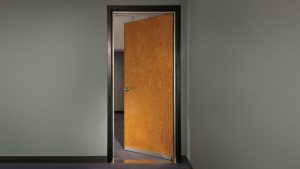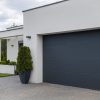Diffusion Confusion
Full disclosure: Acoustic Geometry makes the World’s Best Acoustic Diffusors. This may have an effect on my blog.
 From Wikipedia: “Diffusion, in acoustics and architectural engineering, is the efficacy by which sound energy is spread evenly in a given environment… Virtually all spaces are non-diffuse… Small sound spaces generally have very poor diffusion characteristics at low frequencies due to room modes.”
From Wikipedia: “Diffusion, in acoustics and architectural engineering, is the efficacy by which sound energy is spread evenly in a given environment… Virtually all spaces are non-diffuse… Small sound spaces generally have very poor diffusion characteristics at low frequencies due to room modes.”
OK, plain and simple: there are a lot of “diffusion” products which are junk. They are not the result of scientific consideration, effectiveness, evenness, value, or quality. They are the result of someone in a company saying to their staff “we need something we can call a diffusor” (or “diffuser”, there’s a bit of confusion there as well).
Let’s see a list of them:
 Fake Quadratic-Residue Diffusors (because of thick barrier walls, missing cavity walls, random non-math-devolved depths or “skyline” heights, etc.): QRD-type products require a deep knowledge of the science involved, with well-thought-out math computations. Many companies have obviously not done the math. Personally, I don’t like phase-shift-based diffusors (which is how QRDs work – they smear the phase/timing reflection content), but I especially dislike fake ones, which are money wasted (that includes the dude who apparently gathers scrap-wood pieces from somebody’s carpentry shop floor, glues them randomly together, and calls them “diffusers” – as I said, junk, though it makes a funny joke present to an acoustics guy).
Fake Quadratic-Residue Diffusors (because of thick barrier walls, missing cavity walls, random non-math-devolved depths or “skyline” heights, etc.): QRD-type products require a deep knowledge of the science involved, with well-thought-out math computations. Many companies have obviously not done the math. Personally, I don’t like phase-shift-based diffusors (which is how QRDs work – they smear the phase/timing reflection content), but I especially dislike fake ones, which are money wasted (that includes the dude who apparently gathers scrap-wood pieces from somebody’s carpentry shop floor, glues them randomly together, and calls them “diffusers” – as I said, junk, though it makes a funny joke present to an acoustics guy).
Redirectors (any treatment products with hard flat surfaces, such as pyramids, polygons, wedges, and the like): these offer only another set of flat-surface reflection angles but do not evenly diffuse sound, and they’re highly frequency-dependent (they only redirect above their dimension/wavelength, typically above 3-4KHz). And they’re ineffective in small spaces. And don’t get me started on vacu-form anything!
 Open slat-grids: I see these advertised as “diffusors”, and I do not know why someone thinks these diffuse anything. They’re simply high-frequency (and only at a single frequency, usually about 4KHz) resonator/redirectors. Plain and simple – these are not diffusors. Maybe good for hanging pots and pans…
Open slat-grids: I see these advertised as “diffusors”, and I do not know why someone thinks these diffuse anything. They’re simply high-frequency (and only at a single frequency, usually about 4KHz) resonator/redirectors. Plain and simple – these are not diffusors. Maybe good for hanging pots and pans…
Skylines, Other Odd Names: some of the real QRD products, like “skylines” and fractal-based stuff, are actually decent diffusors (math done well) – but they only work above 2-3KHz, and a high-quality, high-value acoustic diffusor works down to a mid-low frequency – good diffusors are as broadband as possible. All QRDs have high- and low-frequency limitations. Diffusing only high frequencies, like absorbing only high frequencies, is ineffective. Broadband or nothing, why waste space.
 Polycylindrical Diffusors: These are fine diffusors, and date back, in modern times, to the ‘30’s and ‘40’s (ancient Mycenae/Greece had excellent diffusion: rounded marble columns and statues). “Poly-rounds” are easy to make, but their weakness is a varying radius, which reflects differently at different incident angles and as a result, are harder to predict.
Polycylindrical Diffusors: These are fine diffusors, and date back, in modern times, to the ‘30’s and ‘40’s (ancient Mycenae/Greece had excellent diffusion: rounded marble columns and statues). “Poly-rounds” are easy to make, but their weakness is a varying radius, which reflects differently at different incident angles and as a result, are harder to predict.
Cylindrical Diffusors (our Curve Diffusor, for example): these are a constant-radius design, which spreads sound smoothly and evenly at all active incident angles with predictable performance, and are large enough to work down to mid-low frequencies without being too large to fit most spaces (and have no practical high-frequency limitation).  The Curve Diffusor has the added advantage of including a proprietary MLV limp-mass membrane, which works to control low frequencies (we’ve had it tested – it works beautifully, thank you!). Acoustic Geometry Curves have the best and most predictable shape, they’re the right size to be effective while blending into any environment, offer low-frequency control down to 45Hz, are modular, easy to install vertically or horizontally, and have the widest range of finish options on the market (fabric, automotive paint, wood veneers, leather (!), and brushed aluminum). Curve Diffusors are the most effective design and are a great 2-for-1 value (broadband diffusion with low-frequency control) – they’re the World’s Best Diffusor. Plain and simple.
The Curve Diffusor has the added advantage of including a proprietary MLV limp-mass membrane, which works to control low frequencies (we’ve had it tested – it works beautifully, thank you!). Acoustic Geometry Curves have the best and most predictable shape, they’re the right size to be effective while blending into any environment, offer low-frequency control down to 45Hz, are modular, easy to install vertically or horizontally, and have the widest range of finish options on the market (fabric, automotive paint, wood veneers, leather (!), and brushed aluminum). Curve Diffusors are the most effective design and are a great 2-for-1 value (broadband diffusion with low-frequency control) – they’re the World’s Best Diffusor. Plain and simple.
Hopefully, this will help end the confusion about diffusion. Let me know what you think. Or just get some Curves and fix your space.















